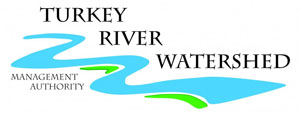Interest in Iowa rivers surges
By Orlan Love, Cedar Rapids Gazette
Printed in The Gazette: http://thegazette.com/2012/03/18/interest-in-iowa-rivers-surges/
Drive west out of Dyersville on Highway 20 and within 100 miles you will cross five good rivers — the North Fork of the Maquoketa, Maquoketa, Wapsipinicon, Cedar and Iowa.
Turn north and take a winding route back and you will cross the West Fork of the Cedar, Shell Rock, Volga, Little Turkey, Turkey, Upper Iowa, Yellow and other rivers too numerous to mention.
While Corn Belt rivers are often considered flat, meandering and muddy, which is not altogether untrue at certain times of the year, they and their timbered corridors can also provide an agricultural state’s best facsimile of a wilderness experience — a realization that is dawning on an increasing number of Iowans.
“Iowans are looking at their rivers in a more positive light, and that’s good for all of us,” said Nate Hoogeveen, river programs manager for the Department of Natural Resources.
The heightened status of rivers, he said, has coincided with a nationwide surge in the popularity of paddle sports and with state and local initiatives to make rivers more accessible and attractive to recreationists.
More Iowans are spending more time on their rivers, expanding the constituency for clean water and recreational opportunities, said Larry Stone of Elkader, a member of the Clayton County Conservation Board.
The magic of moving water is often transformative, said Brian Soenen, founder and coordinator of the DNR’s Project AWARE, which in nine years has coordinated 2,152 volunteers who have removed more than 200 tons of trash from 700 miles of rivers.
“Time spent on the river will turn you into an environmental advocate,” Soenen said.
“There is definitely a growing interest among Iowans in connecting with their rivers,” said Rosalyn Lehman, executive director of Iowa Rivers Revival, an advocacy group formed in 2007 precisely to foster such connections.
Lehman credits the DNR with serving as a catalyst for increasing Iowans’ awareness and appreciation of their rivers. “But it would not be happening without river enthusiasts at the local level,” she said.
DNR-led initiatives include Project AWARE and the Water Trails Program, which has established about 900 miles of designated trails with maps, signage and stream access.
The DNR has also led efforts to remove dangerous low-head dams or to replace them with safer structures that also enhance recreational opportunities. And few if any DNR programs have connected more Iowans with their rivers than its fingerling walleye stocking program, which has convinced thousands of anglers that they need not travel to enjoy world-class walleye fishing.
Water of the Cedar River churns in one of the water features at the Charles City WhiteWater park. (Jim Slosiarek/The Gazette)
County conservation boards, which are often partners in river trails programs, have also placed a high priority on acquiring parks and recreation areas along river corridors, while communities such as Charles City, Manchester, Monticello and Elkader have mobilized to make stretches of their rivers more attractive to both tourists and local residents.
The state’s first white-water course, completed last year on the Cedar River at Charles City, has brought residents together at the riverfront, according to City Administrator Tom Brownlow.
“Rivers used to be dumping grounds for wastes,” said Brownlow, noting that arsenic-tainted sludge and organic waste from a Charles City pharmaceutical manufacturer once threatened both the river and groundwater at the infamous Labounty Superfund site.
“Now everybody is down at the river enjoying themselves,” he said.
The Charles City project and others like it in the planning stages signify that “communities are embracing the rivers they once turned their backs on,” said Gary Siegwarth, manager of the DNR’s Big Springs Hatchery near Elkader,
Nearly a decade ago, Cedar Rapids was at the forefront of the movement to reconnect communities with their rivers, but city and county voters in 2003 rejected a local-option sales tax to support RiverRun, a proposed development whose centerpiece was a white-water boat course.
A few years later, declaring 2008 “The Year of the River,” Cedar Rapids leaders planned a celebration that would have placed discussion of riverfront development front and center. But then the Cedar swamped the city, instantly changing priorities from development to recovery.
While part of the recovery includes a riverside amphitheater, in-depth efforts to capitalize on the Cedar’s recreational potential will have to wait until flood recovery is closer to completion, said Cedar Rapids Recreation Superintendent Sven Leff.
